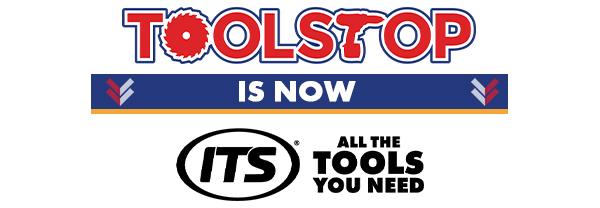Paddle Mixers
Paddle Mixers are essential tools for mixing paints, plaster, or other compounds quickly and evenly. Designed with powerful motors, variable speeds, and ergonomic features, they ensure smooth, lump-free solutions for any project. Shop cordless or mains-powered options at ITS.co.uk today.
Who Uses Paddle Mixers?
Paddle mixers are widely used across trades and DIY projects for their ability to mix compounds efficiently. Here’s who benefits the most:
- Builders – Builders use paddle mixers for mixing cement, plaster, and mortar to achieve a consistent and workable mixture.
- Decorators – Perfect for mixing paints, fillers, or jointing compounds, ensuring smooth and even application.
- DIY Enthusiasts – Homeowners tackling renovation or creative projects rely on paddle mixers for tasks like preparing epoxy or grout.
Paddle Mixers Are Great for Jobs Such As:
- Mixing plaster – Achieve a perfectly smooth and lump-free plaster for walls or ceilings.
- Preparing paint – Quickly blend paint to the right consistency for even coverage.
- Mixing mortar – Ensure strong, consistent mortar for bricklaying or tiling jobs.
- Blending grout – Get an even and smooth grout mixture for a flawless finish.
- Combining resins – Perfect for mixing epoxy or other multi-part resins for creative or industrial projects.
How to Choose the Best Paddle Mixer
Selecting the right paddle mixer ensures smooth, lump-free mixes for every project. From plaster to paint, these tools are essential for efficient preparation. Here are the top factors to consider when choosing the best paddle mixer for your needs.
1. Corded vs Cordless Power
Corded Mixers: Perfect for long mixing sessions with consistent power supply. Ideal for heavy-duty applications where runtime is critical.
Cordless Mixers: Great for mobility and use in remote locations. Choose models with high-capacity lithium-ion batteries for longer runtime.
2. Speed Control
Variable speed settings allow you to adjust the mixer’s power based on the material being mixed. Lower speeds are ideal for delicate mixes like paint, while higher speeds are better for thick compounds like plaster or mortar.
3. Paddle Design
Different paddle designs cater to various materials. For example, spiral paddles are excellent for thick mixtures, while flat paddles are suitable for lighter, liquid-based solutions. Ensure your paddle matches your primary mixing needs.
4. Ergonomics and Weight
Look for a mixer with an ergonomic grip and balanced weight distribution. Lightweight models are better for prolonged use, reducing fatigue during long mixing sessions.
5. Motor Power
Higher wattage motors provide more torque, which is essential for mixing denser materials. For professional use, consider mixers with at least 1200W for reliable performance.
6. Splash Guard
A built-in splash guard prevents messes, especially when mixing liquids. This feature keeps your workspace clean and reduces waste.
7. Brushless Motors
Brushless motors are more efficient, offering longer runtimes and less wear and tear. They’re a great investment for professionals seeking durability and low maintenance.
Popular Accessories for Paddle Mixers
Choosing the right accessories for your paddle mixer ensures consistent, high-quality results for every mix. Whether you’re preparing paint, plaster, or mortar, these accessories can enhance the functionality of your mixer and improve your overall efficiency.
1. Replacement Mixing Paddles
Having spare mixing paddles on hand allows you to switch between different paddle designs for various materials. Spiral paddles work best for dense materials like concrete, while flat paddles are ideal for paints or adhesives. Ensure compatibility with your mixer model for seamless performance.
2. Dust Extraction Attachments
Dust extraction attachments help minimize mess by capturing airborne particles during mixing. This is especially useful when working with dry materials like plaster or mortar, keeping your workspace cleaner and reducing health risks from inhaling fine dust.
3. Protective Gear
High-quality PPE, such as goggles, gloves, and dust masks, ensures safety while operating paddle mixers. Goggles protect against splashes, gloves improve grip and reduce hand fatigue, and dust masks shield you from inhaling harmful particles.
Frequently Asked Questions
What is a paddle mixer used for?
A paddle mixer is used to evenly mix materials such as paint, plaster, mortar, or adhesives. It ensures consistency and removes lumps, making it an essential tool for construction, decorating, or DIY projects.
What is the difference between corded and cordless paddle mixers?
Corded paddle mixers provide consistent power and are ideal for heavy-duty tasks, while cordless mixers offer greater mobility and are perfect for projects where access to mains power is limited.
How do I choose the right paddle for my mixer?
Choose a paddle based on the material you are mixing. Spiral paddles are suitable for thicker materials like mortar, while flat paddles are better for liquids like paint. Always ensure the paddle is compatible with your mixer.
What safety precautions should I take when using a paddle mixer?
Always wear protective gear such as goggles, gloves, and dust masks to prevent injuries from splashes or airborne particles. Ensure the mixer is turned off when not in use and follow the manufacturer's guidelines.
Can paddle mixers handle thick materials like concrete?
Yes, most paddle mixers can handle thick materials like concrete. However, ensure your mixer has a powerful motor and use a spiral paddle for the best results.


